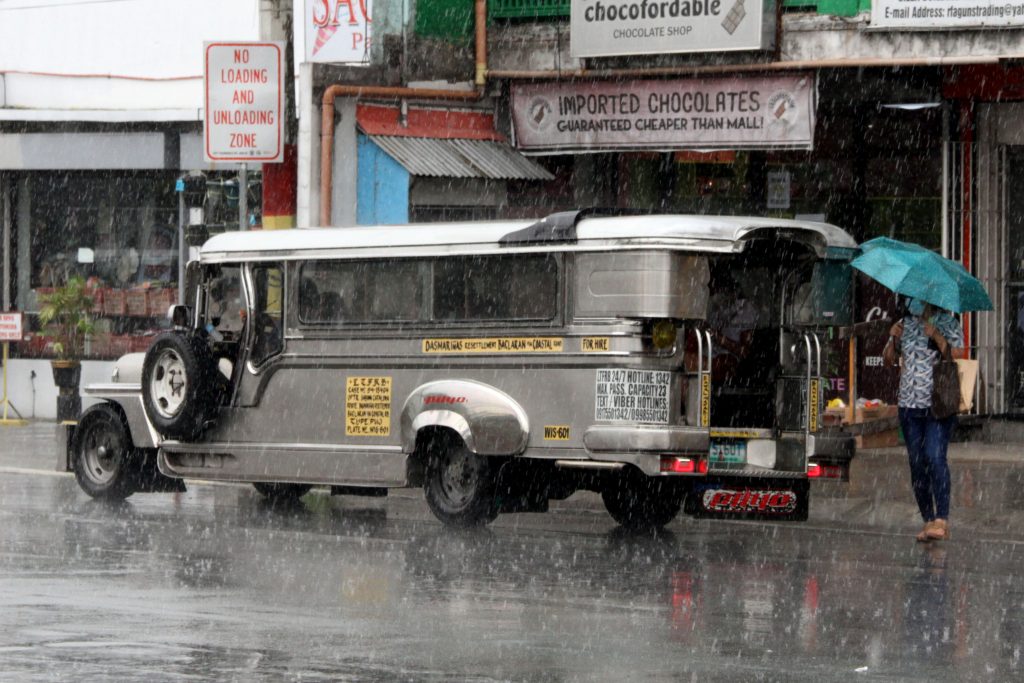
MANILA – The Department of Transportation (DOTr) said it would “strictly enforce” protocols on physical distancing in public transport.
“When a decision is made on the 1-meter physical distancing in public transport, we have to strictly enforce,” DOTr Assistant Secretary Goddes Hope Libiran said in a message on Friday.
In an interview over state-run PTV 4 on Saturday, Presidential Spokesperson Harry Roque announced that President Rodrigo Duterte decided to retain the one-meter physical distancing policy in public transport.
The DOTr earlier suspended the 0.75-meter physical distancing policy after various sectors expressed concern over the measure saying it could lead to increased transmission of Covid-19 in public transport.
“The DOTr accorded the necessary respect and acknowledgment to public health policymakers and stakeholders and their positions on the issue, even as we are also earnestly pushing to uphold the interest of the riding public and their essential need for mobility,” Libiran added.
She said the temporary suspension on the policy would also give President Rodrigo Duterte the space to make a decision on the matter.
“[DOTr Secretary Arthur Tugade] does not enjoy seeing a perception that a timeline is being set whereupon the Office of the President should make a decision. We want to give the Office of the President a free hand to decide on this at their own time and context,” Libiran said.
Following the suspension, Gabriela party-list Rep. Arlene Brosas said the DOTr should issue “a public apology for creating confusion and endangering people’s lives over physical distancing rules in public transport systems.”
In response, Libiran clarified that the 0.75-m physical distancing policy was supported by medical experts and was signed by the Inter-Agency Task Force for the Management of Emerging Infectious Diseases (IATF-EID) on September 7.
“Apart from consultations with medical experts and simulation activities regarding transmission and exposure, the enforcement of reduced physical distancing on railways was based on the results of a survey of international practice on how railway operators and regulators are handling the coronavirus disease 2019 (Covid-19) pandemic,” Libiran said.
She noted that the reduction in physical distancing is in response to the public’s clamor to increase public transport capacity to help revive the economy.
Aside from increasing the maximum passenger capacity of public transport through less physical distancing, she said the DOTr has also increased the number of available public utility vehicles (PUVs) aside from promoting these for use as shuttle service.
“Reducing physical distancing in public transport was proposed alongside other proposals. Hindi ibig sabihin nyan na ‘yan lang ang ginagawa at ‘yan lang ang gagawin (That’s not the only thing we’re doing),” Libiran said.
To date, she said a total of 786 public utility jeepneys are operating along 45 routes in Metro Manila, along with 3,854 buses in 32 routes, 387 point-to-point buses in 34 routes, 1,905 UV Express in 59 routes, 20,891 taxis, and 23,968 transport network vehicle services.
“On adding more trains, we are doing that already. In fact, yesterday, for the first time in history, MRT-3 was able to field 21 train sets on its mainline,” Libiran said.
In a separate message, the Land Transportation Franchising Regulatory Board (LTFRB) said the one-meter physical distancing in public transport does not equate to the 50-percent maximum passenger capacity (MPC) or the ‘one-seat-apart’ rule that most PUVs followed in the past.
If strictly enforced, the one-meter physical distancing in public transport would limit the passengers of PUVs such as jeepneys and buses to less than half of its MPC.
“The LTFRB, with the guidance of DOTr, will determine the capacity according to the strict enforcement of one-meter physical distancing in PUVs,” the LTFRB said.
Aside from the four train services in Metro Manila that had a significant increase in maximum passenger capacity, the DOTr earlier said that the 0.75 m distancing policy would only result in an increase of one or more passengers for most PUVs like jeepneys and buses.